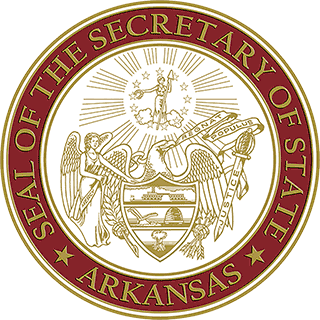2011 State Capitol Exhibits
2011 State Capitol Exhibits
Spring 2011—Capitol 100
Secretary of State Mark Martin helped celebrate the 100th Anniversary of the Arkansas State Capitol with ‘Capitol 100” as the spring display. It offered an impressive look at the building’s creation from groundbreaking to the date of moving in; a project complete with budget challenges and numerous delays.
“It was a political hot potato that rose above political wrangling,” said David Ware, Capitol historian. “The Capitol represents the triumph of big ideas over fairly strong adversity that you still see today in large building projects.”
Construction of the Arkansas Capitol began in 1899 and stalled early due to problems with financing and failed deadlines. With the support and vision from the project’s most emphatic backer, then-Governor George Donaghey, members of the Arkansas Legislature met for the first time in the chambers of the still-unfinished Capitol on January 9, 1911. Donaghey declared the building was “done enough” to accommodate the solons and state officers.
“The Capitol turned out far better than many expected, other than George Donaghey, who was a believer in the very beginning, ” Ware said. “The finished product is a miracle of will.”
The “Capitol 100” display was an impressionistic look at the building’s creation including original blueprints, bricks, and a rustic mule-drawn scraper, typical of those used by convicts in the excavation. The exhibit highlighted the vision of the Capitol’s first architect, George R. Mann, including a large-scale watercolor rendering of Mann’s never-built design for the Montana State Capitol, which served as the “design DNA” of the Arkansas State Capitol.
Other images revealed the faces of laborers and craftsmen, free and convict, who worked to make the Capitol ready for its debut as the seat of state government. A final image showed Governor George Donaghey seated with his staff in the oak-paneled Governor’s Reception Room on his first day there.
Fall 2011—The Greatest Generation—And More
The Greatest Generation—And More: Honoring Service Over a Century was a collection of uniforms, accoutrements and memorabilia from America’s wars of the last 100 years, on loan from Mr. Harold Steelman of Little Rock.
“I’m very grateful to Coach Steelman for loaning these artifacts to us,” Secretary Martin said. “This is a valuable display to remind all of us of the cost of freedom.”
Steelman worked during legislative sessions for the State Senate but is better known to Arkansasn for his athletic background as a University of Arkansas football player from 1954-55 and a high school and college coach before becoming manager of War memorial Stadium. He also led the AETN World War II veterans oral history project, interviewing over 100 veterans.
The collection emphasized World War II but included items from World War I, the Korean War, Vietnam and more recent conflicts - a century, or close to it, of uniformed Americans going overseas.
Souvenir pillows from training bases around the country conjured images of recruits shipped far from home after donning Uncle Sam’s suit. A pocket missal prepared for Catholic soldiers displayed next to an Army songbook, a 1942 training camp Christmas program souvenir and a home-front morale-building event leaflet. Alongside various unit histories, published during or just after the war, a 1948 letter inviting demobilized “alumni” of an armed unit to join the division association. A vintage copy of the wartime classic, Thirty Seconds Over Tokyo, opened to a picture of an American pilot captured by Japanese troops.. Under it, the pictured pilot and onetime prisoner inscribed the book to Steelman with the wry comment, “not my best day.”
After leaving the Capitol, the exhibit was used to raise money to speed the development of the Arkansas Veterans’ Hall of Fame.



